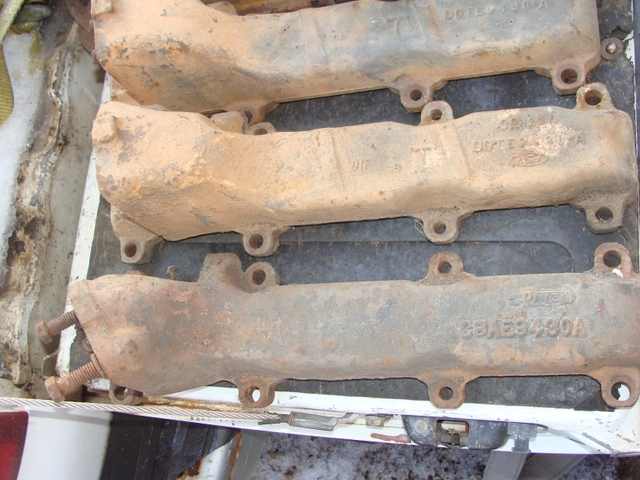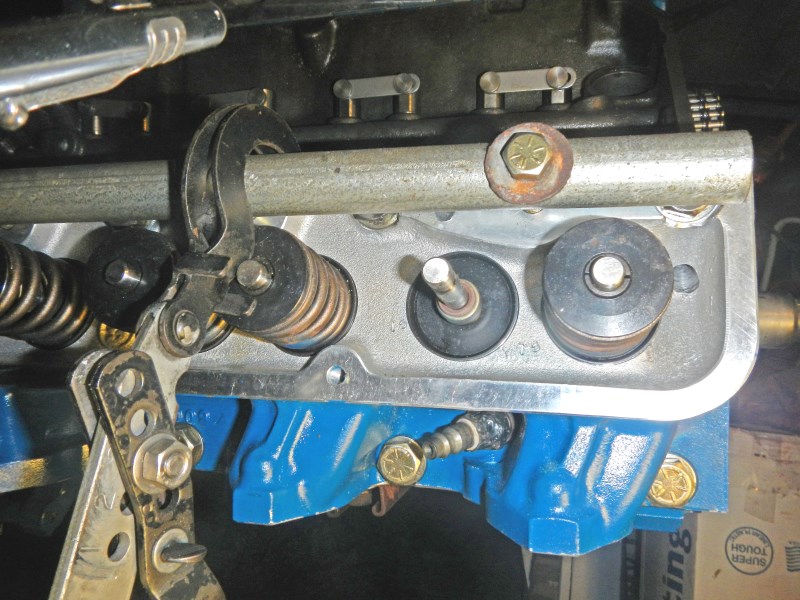
Why go to the trouble to build an engine just 1ci bigger? The answer was economics: the 428 was cheaper to make as there were fewer rejected castings and cheaper internal parts. By tweaking the bore and stroke combination once again the 428 was born-it used a smaller bore and a longer stroke (4.135-inch bore/3.985-inch stroke). Undeniably the 427 FE was a hit, but Ford wasn't done with the design quite yet. Hey guys I was wondering if ya'll would know the easyest way to tell the difference between a 352 cid and a 390 cid motor I have this 1967 F350 Tow truck and from decoding the VIN plack I was able to find out that the stock motor was supposed to be the 352 cid V8.I am trying to find out if the motor in the. It cut a swath through virtually every racing venue and in "side-oiler" configuration the performance of 427 Shelby Cobras was the stuff legends were made of (we should note we're leaving the 427 SOHC variant out of this conversation as they are a story in themselves). Of course one of the most famous of the FEs was the 427 (4.2328-inch bore/3.784-inch stroke). True to form Ford threw another FE in the mix with a similar displacement-the 410-inch FE used in Mercurys and Edsels had a smaller bore and a longer stroke (4.050-inch bore/3.980-inch stroke). I took way to many credits for this.Although still an FE, the 406 that came next was based on a redesigned block to accommodate the larger bore (4.130-inch bore/3.784-inch stroke). The Nickel in higher quantity at a certain point becomes a bad thing. Meaning it's totally bogus on "high nickel" I use a lower nickel rod in certain areas of the block when welding but its for a "softer" weld. With the exception of a few hi-performance 428 blocks, most all other FE blocks are identical externally.
#FORD FE390 352 36 STAMPED ON THE BLOCKBLOCK CODE#
29/50071-2this X only pertains if it's upside down LOL Basically the 390's are as follows: Z is a 4V, M is a tri-power, P is a PI, S is the 66-68 GT and the 69 IP, (edited, I realized I forgot one) X code premium fuel 2V, and H and Y are the low po 2V engines. FYI - A majority of FE blocks have either a '352' or a backwards '501' cast into the front of the block.

The 390 is a torquey and bulletproof motor that’s still popular with performance engine builders. The 390 was part of the Ford-Edsel (FE) engine family, which was produced from 1958 to 1976. Other FE engine characteristics include a skirted block, a completely flat oil pan mating surface, the number '352' cast into the rear of the block behind the flywheel and intake manifold bolts that are perpendicular to the intake face, or 45 degrees to the ground.

The Ford 390 was a 6.4-liter (390.04ci) gasoline big block V8 engine that was produced between 19. According to the Fordification website, All FE engines have five valve cover bolts. It shows up on any sort of Ford casting, even Model T Ford blocks. An Introduction to the Ford 390 FE Engine. If you hear someone claim that their block is "high nickel" you can be sure of one thing - that guy has no clue what he is talking about.ġ915 Model T Ford touring Black of course!ġ968 Cougar W code 427 GT-E Madras Blue / Turquoise interiorġ968 Cougar GTE 427 Augusta Green / Saddle Nickel content in a higher than normal amount is not desirable for cast iron cylinder blocks. I know from experience that F, G and H were 427 cores. Those blocks might have been used for industrial and marine engines, but they were also used to make up replacement automotive short blocks for warranty and service. CX appears on 428 blocks made after car production stopped. The C seems to have been used if the block had 428 cylinder cores.

So if you want to cut and paste the Firing Order for the FE Fords (352. In the foundry those marks on the rear bulkhead were used to indicate cylinder core thickness content of the block. The firing order of a small block Ford 302 HO/351W order is 1-3-7-2-6-5-4-8. The CX scratched into the sand core on the rear bulkhead of FE blocks is another matter. JerryIt shows up on any sort of Ford casting, even Model T Ford blocks.

As pointed out above, '352' is stamped into pretty much every pre-73. Either your measurement of the bore is way off, or you have an exceedingly rare 406 (4.13' bore and 3.78' stroke) that a previous owner dropped in as a replacement. The Mercury 410 and the 428 have a stroke of 3.98'. I read this in book about Ford block ID, wich also stated CX to be industrial use block. The 352, 360, 390 and 406 FE motors have a stroke of 3.78'.


 0 kommentar(er)
0 kommentar(er)
